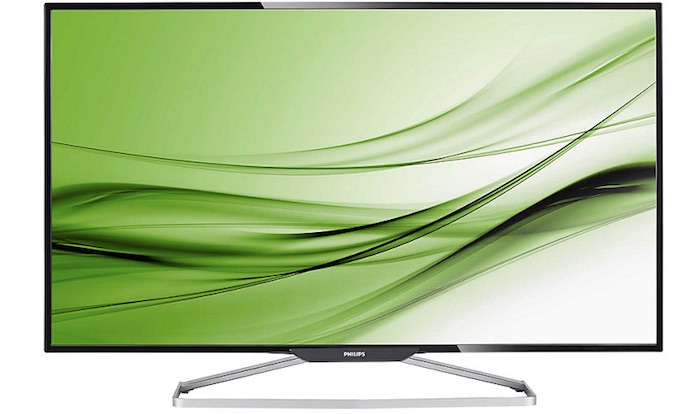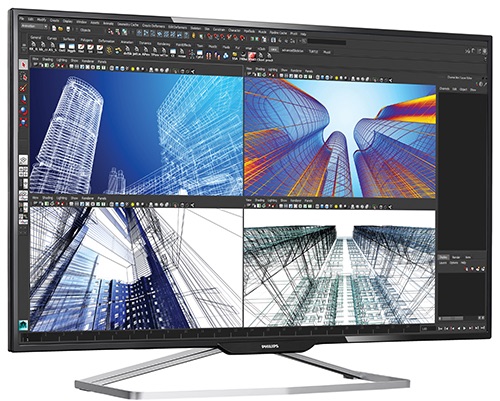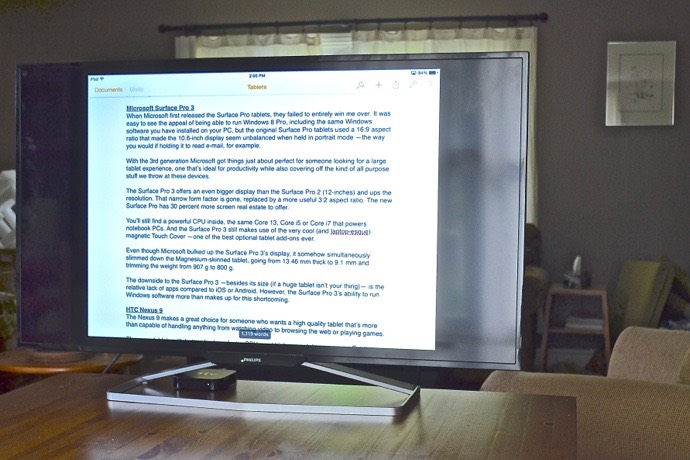
I spend the majority of most working days researching and writing. But I also have frequent periods where I have the opportunity to put some of the latest high tech gear through its paces. That is one of those “cool” aspects of my job. What people don’t always realize, though, is that this gear usually has to go back, and that can cause severe withdrawal symptoms. Not so cool. Case in point, I just had the opportunity to review a new Philips 40-inch widescreen 4K Ultra HD monitor. This is a beautiful piece of equipment and something that would be a real benefit to me. But it had to go back. While I ponder whether my office budget could be tweaked to support an upgrade like this, here are my thoughts on this behemoth of a computer monitor.
Before I get too deeply into things, I should clarify my use of the word behemoth. The display panel on this Philips 4K Ultra HD monitor is huge. A few years ago, it would have put many flat panel TVs to shame in terms of overall size. Despite the massive panel, it’s actually a surprisingly sleek monitor. The box itself is intimidating, but weighed under 14kg—including packaging. Once unboxed, the monitor revealed an extremely thin bezel (just over 1cm), so it’s not much bigger than the panel itself and the monitor maxes out at 8.8 cm in thickness.

Add on the attractive, minimalist aluminum stand and the over-all effect is sleek and modern as opposed to bulky.
That being said, if/when I manage to justify upgrading to a display like this, I am going to have to be pretty brutal about re-arranging my desk space. As it is, the only area I had with sufficient room to set it up was in my dining room, which was not optimal for photography …
|
Philips 40-inch widescreen 4K Ultra HD monitor Key Specs
|

That is a Lot of Screen Real Estate
When it comes to computers, there are several key areas where you can never have too much. You’ll never have too much RAM and you’ll never have too much storage space. Add screen real estate to that list.
The bigger the computer monitor, the better, especially when the resolution of that display also increases. More room onscreen means more windows can be open simultaneously. Yes, you can open a bunch of windows on a small display, too, but good luck actually reading what’s in them. With a big, high resolution display, you can actually read the contents of each of those windows without first expanding them. For someone like me who might have a dozen windows open at a time while conducting research, this is a massive productivity boost.

I currently use a 27-inch display and the difference between it and the Philips 40-inch display is astounding. The 13-inch diagonal panel difference between the two doesn’t sound like it would be a huge upgrade, but when you account for the difference in area between the two, that is a much more significant difference—going from a 27-inch widescreen monitor to a 40-inch widescreen nearly doubles the viewing area.
Add in the 4K Ultra HD resolution (3840 x 2160) and with a source that is capable of supporting 4K, that picture isn’t just getting larger, it’s just as crisp. A typical 27-inch display at 2560 x 1440 resolution has pixel density of around 109 PPI (pixels per inch), but a 40-incher like the Philips at 4K comes in at about 110 PPI.
This Phillips 40-inch widescreen 4K Ultra HD monitor takes the productivity boost of a bigger screen to the next level: simultaneous support for multiple input sources. With MultiView, you can connect two different devices—a PC and laptop, for example—and split the display between the two.
4K Support is Great, But 4K Content Is Not a Requirement
I wanted to add a quick note on the 4K resolution panel.
4K Ultra HD support is a highly desirable feature, but you don’t need to have 4K output to take advantage of this monitor. I hooked up sources like an Apple TV (playing video content at 1080p resolution), an iPad Mini and a MacBook Air (output at 2560 x 1440) and while the display obviously wasn’t quite as crisp as it would be with native 4K content, it still looked very good, especially when sitting back a few feet.
And even if you don’t have a PC with 4K capability now, there’s a good chance your next one will have that feature—and you’ll be ready for it.

I should note that the contrast was especially impressive on this monitor—movies on it easily rivalled the output of the TV in my family room. And I wasn’t expecting the sound capability. There are dual 7 Watt speakers hidden behind the display panel that produce sound quality and volume well-suited to movies, music and gaming.
The Ultimate All-In-One Monitor
Much as I love the idea of having the Philips 40-inch widescreen 4K Ultra HD monitor perched on my desk, in our home I think a computer display of this size and capability has even more potential as an all-in-one monitor.
It’s VESA wall mountable, so that gets it up off a desktop. With its huge range of inputs, it would be excellent as the focal point of my kids’ multimedia hub. This one computer monitor could be hooked up to their game consoles for big screen gaming (yes it has a Game mode). Streaming video—whether from their Xbox or the Apple TV—would look and sound great. Their computer would have a massive display that’s viewable even sitting back in an arm chair and they could also split the screen, so one could work on the PC and another on their tablet. It also has a 4-port, fast charge USB 3.0 hub for keeping their various devices charged.

Is it overkill to work on my iPad with it streaming to this 40-inch monitor? I don’t think so!
I’m going to wrap this up by saying that when I first saw the massive box at the front door, I was sceptical about how useful a 40-inch computer monitor might be. After spending time with the Philips 40-inch widescreen 4K Ultra HD monitor, I’m convinced. The biggest problem if I were to ever get one of these isn’t going to be what to do with it, it’s going to be who gets it …


